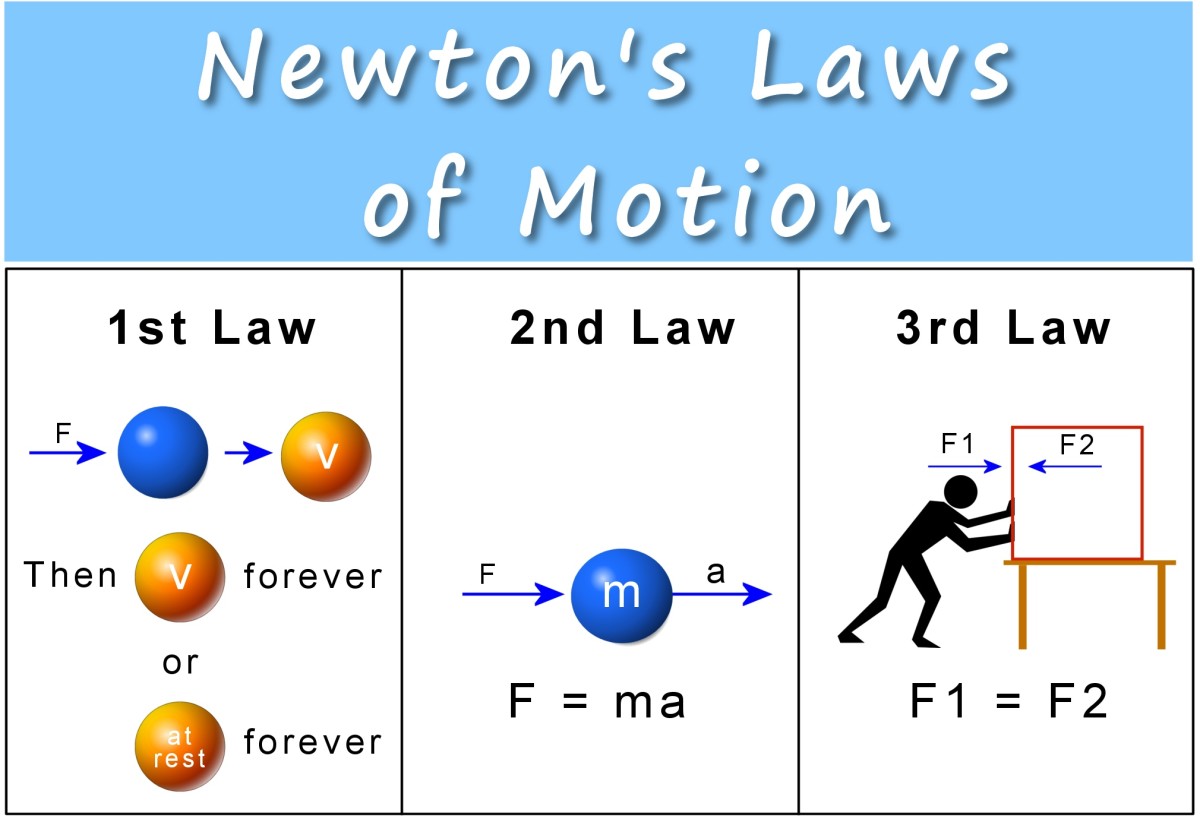Newton's Laws of Motion: The Foundation of Classical Mechanics
Introduction:
In the realm of physics, few names resonate as strongly as Sir Isaac Newton. Born in 1642, Newton's revolutionary insights transformed our understanding of the universe, laying the groundwork for classical mechanics. Among his most influential contributions are the three fundamental laws of motion, which form the basis for explaining the motion of objects. In this blog, we will explore Newton's Laws of Motion and their significance in comprehending the mechanics of our everyday world.
1. Newton's First Law - The Law of Inertia:
Newton's First Law states that an object at rest will remain at rest, and an object in motion will continue moving in a straight line at a constant velocity, unless acted upon by an external force. This principle is also known as the Law of Inertia.
In simpler terms, an object will not change its state of motion unless a force is applied to it. This law seems intuitive in our daily lives: we observe a ball on a flat surface eventually coming to rest due to friction, or a moving car gradually slowing down when the engine is turned off.
The Law of Inertia has profound implications. It explains why astronauts float inside a spacecraft in the absence of gravity, and it forms the basis for seatbelt usage in vehicles. Inertia is the resistance to change in motion, and understanding it helps engineers design safer transportation systems.
2. Newton's Second Law - The Law of Acceleration:
Newton's Second Law describes how force, mass, and acceleration are related. It states that the force acting on an object is equal to the mass of the object multiplied by its acceleration. Mathematically, this can be expressed as F = ma, where F represents the force, m is the mass of the object, and a is its acceleration.
This law demonstrates that to accelerate an object, a force must be applied to it. The greater the force, the greater the acceleration, and conversely, a larger mass will require more force to achieve the same acceleration.
Newton's Second Law is a fundamental principle in understanding how objects move in response to applied forces. It underpins engineering designs, such as calculating the thrust needed for a rocket to lift off, the force required to stop a moving vehicle, or the motion of athletes in various sports.
3. Newton's Third Law - The Law of Action and Reaction:
Newton's Third Law states that for every action, there is an equal and opposite reaction. In other words, if object A exerts a force on object B, then object B exerts an equal force in the opposite direction on object A.
This law illustrates the interconnectedness of forces in the universe. When you walk, your foot exerts a backward force on the ground, and the ground exerts an equal and opposite force, propelling you forward. Similarly, the propulsion of a rocket depends on the expulsion of exhaust gases in the opposite direction.
Understanding Newton's Third Law is crucial for engineers designing everything from vehicles to sports equipment. For instance, a swimmer can use the water's reaction force against their hand to propel themselves forward during a stroke.
Conclusion:
Newton's Laws of Motion are cornerstones of classical mechanics, providing the framework to comprehend the motion of objects and the forces that govern them. From the Law of Inertia to the Law of Action and Reaction, these laws explain how the world around us moves and interacts.
Even in the face of modern advancements in physics, such as Einstein's theory of relativity and quantum mechanics, Newton's Laws remain relevant and accurate within their applicable domain. They continue to be the bedrock for engineering, technology, and various scientific disciplines, shaping our understanding of motion and providing a profound glimpse into the workings of the universe. As we continue to explore the mysteries of the cosmos, Newton's legacy endures as a guiding force in our quest for knowledge and discovery.

Comments
Post a Comment